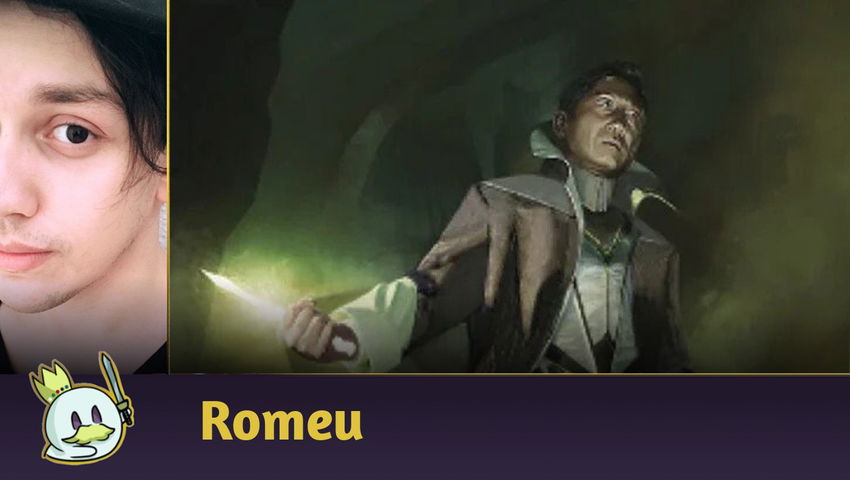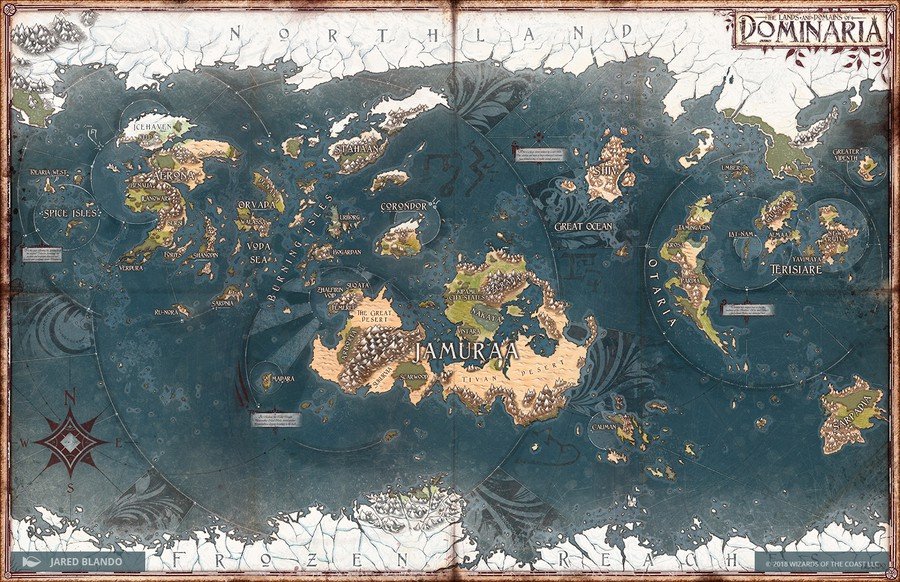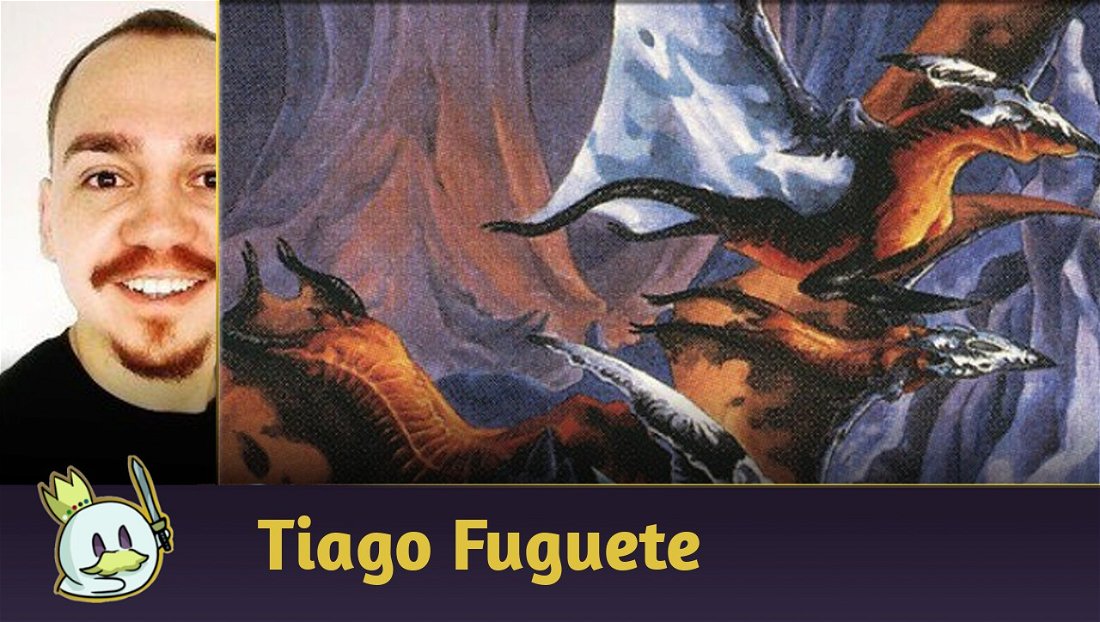The Standard Metagame in the competitive Best of Three universe seems to be dominated by Black-Based Midranges these days, getting to the point where hardly any other color combination and archetypes can seriously find a spot today.
This will likely lead to some direct intervention, given that while there is a huge distinction between decks like Mono-Black Aggro and Esper Midrange, they are still based around the same cards, and the only plausible way out is to build your own version of the desired archetype and go for the "grindfest", or adapt the game to more unfair situations, such as joining Titan of Industry with Invoke Justice.
But in case you don't want to live constantly at war of attrition in Magic Arena, the best recommendation is to seek your wins in the Best of One, since the ability to adapt to any situation of the Midranges is mitigated in a world without Sideboards. And the best route in this environment is to end games quickly—whether winning or losing.
Searching for a fast game proposal that can play around the Midranges in a universe without Sideboards, most of my Best of One games have been showing good results when looking for a mix of aggressive clock and efficient Tempo Plays with the Azorius Heroic.
The Decklist
Although there are no mechanics per se, this deck basically works like a Pauper's or Pioneer's Heroic list: you cast a creature, keep it protected, and use your spells to increase its power while getting another benefit, thus setting the clock to end the game in a few turns.

Your main target is Illuminator Virtuoso, which also operates as the main wincondition since it has Double Strike and increases its own power considerably while filtering your draws. Typically, he's the threat you need to protect at all costs while clearing the way for him to attack for a turn or two to lethal damage.
Your secondary target is Stormchaser Drake because it offers an extra draw for each spell that targets it, turning all of your spells into along with an evasive threat, something important in a universe most early bombs don't fly.

As complementary threats, we rely on the multi-format staple, Ledger Shredder. It also has evasion, grows naturally even if no spell is spent on it, and guarantees draw filtering as it grows in power and quickly spirals out of control.

Finally, the last slots are very flexible, but I'm not comfortable with just twelve threats, and among the most varied options available, one that I liked the most was Faerie Vandal for its synergy with the rest of the deck.
Alongside any other creature, Faerie Vandal grows with Connive or Stormchaser Drake. It also increases its own power with Combat Research or Security Bypass triggers, while Flash works as a good trick against Liliana of the Veil's -2.

To keep our resources flowing, we rely on Combat Research and Security Bypass — two low-cost Auras that add extra draws or hand filtering along with any of your threats.
Security Bypass is also extremely useful for giving evasion to Illuminator Virtuoso, and I would consider adding a fourth copy of it if the maindeck slots weren't so small.

Despite not being an Aura, Homestead Courage works similarly while synergistically good as a spell to be discarded with Connive while triggering Ledger Shredder or offers two extra draws with Stormchaser Drake through of a single spell.

To protect our threats, we have Slip Out the Back and Shore Up, both of which are useful for dealing with removals, but they also add other distinct qualities to their use.
Slip out the Back is best used as a reactive spell on your opponent's turn: Phase Out automatically takes the target creature out of play, and therefore ends up not being as effective as a combat trick during your turn. However, it is also a great response against sacrifice effects, and its permanent power boost helps to improve the clock on the next turn.
Shore Up, on the other hand, is a great combat trick and protection when you're being proactive: Hexproof doesn't remove your creature from play, it lets it continue your attack even in the face of removal. In addition, Shore Up also allows you to block an opponent's creature by untapping one of your threats during their combat phase.
I would normally recommend four copies of each, but we need more interaction against other troublesome circumstances.

And this is where Spell Pierce and Fading Hope come in.
Fading Hope also works as a pseudo-protection for your creatures, even though it's terrible in this regard, since it resets your threat's power boost. Its main real function is to remove blockers from the path and/or delay the opponent's clock long enough.
Spell Pierce is what I call a "necessary evil" in a world where players usually tapout for Liliana of the Veil and Invoke Despair, being very decent when it comes to protecting your creatures or prevent some bomb that would turn the game in their favor from resolving.

The manabase is the best we have currently, and I wouldn't recommend removing any of the lands as you need consistent access to blue and white for the first few turns, and that includes using the questionable Thran Portal to ensure more flexibility in the early game.
Channel Lands offer extra value if the match goes on, but we don't want more than one copy of each.
Alternate Card Choices
While this is the list I recommend for the Best of One environment, none of these slots are set in stone, and you can alternate the numbers as you like or need, or even add other spells.
Some cards that crossed my mind as I built and piloted this deck were:

Delver of Secrets might seem decent initially, and I've seen some lists trying to use it, but with more than half of the deck being made up of spells or permanents that aren't Instants or Sorceries, it seems too inconsistent to work.
Suspicious Stowaway allows hand filtering, or extra draws if you trigger Nightbound (which is rare, given that you're always looking to cast two or more spells each turn), being a decent complementary threat, you can run it instead of Faerie Vandal if you prefer.
Dennick, Pious Apprentice is useful against other Aggro decks and a powerful hate piece against Reanimator lists, making it a decent choice in the maindeck with its 2/3 body that still offers two threats on a single card. However, it doesn't directly interact with our proposal and doesn't have a built-in clock fast enough to pressure the opponent to respond to it, but in case you're seeing a lot of Invoke Justice and the like, Dennick is an excellent option.
Finally, Dorothea, Vengeful Victim is a fun alternative that turns any threat into a quasi-Geist of Saint Traft, significantly increasing the clock. However, Dorothea by itself doesn't increase the number of creatures on the board, and paying three mana to attach her is a considerable cost, given that you'll still need to invest mana in protection and/or backup Spell Pierce.

Timely Interference basically works like a cantrip on most occasions, and it feels like a dead slot when there are more efficient means of card selection in the format.
Speaking of card selection, if I were to run something to look for a threat, it would be Impulse. But one of the most classic spells from the game's first decade doesn't do enough, doesn't interact positively with the deck's strategy, and doesn't even cover one of its inherent weaknesses to warrant a slot.
Boon of Safety and Take Up the Shield are protection spells that work best against sweepers like Depopulate if they become prevalent in the Metagame. Take up the Shield is decent and maybe deserves a spot in the maindeck if you face more aggressive archetypes due to the Lifelink it guarantees.
Valorous Stance is also a good protection against removals and sweepers, and proactively deals with large creatures, especially those that slow down your clock like Sheoldred, the Apocalypse. It might be worth running it instead of Fading Hope if you want more answers against big threats and don't care so much about the damage done by smaller creatures.
Speaking of Sheoldred, Make Disappear costs more than Spell Pierce, but it helps to deal with relevant creatures with a counterspell, especially those that can't come into play or will cause a huge headache, such as the aforementioned Phyrexian praetor, Soul of Windgrace and Titan of Industry.
Finally, March of Swirling Mist is an excellent way to trigger multiple copies of Illuminator Virtuoso and Stormchaser Drake in exchange for a single card, and it easily protects your top threats from a The Meathook Massacre and the like. In addition, it also allows you to remove multiple blockers for one turn, and perhaps deserves a Maindeck slot instead of Fading Hope
Mulligan and Game Stance
Mulligan

Your ideal hand will be those where you have enough lands to progress with your game plan, plus one or two threats, a payoff that lets you keep your resources flowing, and one or two ways to protect your creature.
Other viable hands are those where you have a threat along with Combat Research or Security Bypass and more ways to protect your creature, for example:

This hand allows its controller to stay ahead for the first few turns, and a Faerie Vandal at the End Step of turn 2 followed by Combat Research + 2 protections on turn 3 will help grow your creature in the next two turns and offer you more resources in the short term, giving you more threats and/or more ways to stay ahead.
Azorius Heroic is a strategy that severely punishes Mulligan, but also doesn't reward overly fragile hands, so the overriding rules for defining your keep are that your hand needs a good mix of creatures, lands, and payoffs, and any excess in between is probably a Mulligan. But you can risk a keep with multiple creatures and hope the topdeck benefits your clock.
Postures
Due to its Voltron proposal, where you want to turn your creatures into big threats through pumps and protection, Azorius Heroic is naturally a beatdown archetype that seeks to win the game in the fewest turns possible, and do so without needing to stretch to the point of taking too much risk.
Your ideal line is to cast a creature on turn 2 and start playing pumps on turn 3. But in a realistic world, what happens is it takes a removal and your threat on the next turn is your main clock, as you will have backup protection. From that moment on, you will try to enchant or cast spells on your creature each turn and pressure your opponent before they overwhelm you in card advantage or establishes a faster clock;

The problem, however, is that Standard is living an anomaly, where Black-Based Midranges reign at the top and far above the rest of the format, and our greatest challenge is to prevent Liliana of the Veil and Sheoldred, the Apocalypse stay in play too long or don't even hit the board — especially the Phyrexian praetor who will punish you for drawing multiple draws in a single turn.
So, in these games, my recommendation is to try to be more aggressive on the draw where you will be disadvantaged, while you can afford to be more conservative in play and guarantee a creature in play with backup protection because guaranteeing it will survive matters more than trying to win a race when your clock can be ruined by a removal. I don't recommend attempting to extend the game if they eliminate all your threats because these archetypes can definitely accumulate rivers of value in front of an empty board, and your time is better spent trying to get a good result in the next game.

That said, in the other matchups, you tend to be a lot more aggressive and punish your opponent for spending time trying to react to what you do: against Mono-Red, you can block their creatures well in the first few turns and pressure them afterwards.
Reanimator is dependent on some specific card combinations, and if you can keep Titan of Industry out of play, the clock will be in your favor, but you need to be careful with The Wandering Emperor and Cathartic Pyre.
In general, you will be very favored against any archetype that is operating with inconsistent strategies or too reliant on some specific combination—something common in the Best of One environment—if you follow the right script and understand how it works. It's worth making a turn 2 threat against these decks because if they hold a questionable hand or don't have an immediate response, you're way ahead in your strategy compared to theirs.
Conclusion
That's all for today.
Overall, Standard doesn't seem to be at its best and the Black-Based Midranges' grindfest isn't the kind of Metagame that everyone likes, especially those who prefer fast-paced games.
For those, my best recommendation is to try more aggressive strategies in the Best of One environment, and Azorius Heroic offers an approach where every threat matters and interaction isn't entirely left out for the sake of sheer speed. It's definitely not the best deck in the format, but it's one that heavily punishes bad keeps decisions or wrong deckbuilding concessions.
Thanks for reading!














— Comments 0
, Reactions 1
Be the first to comment